Japanese aquarists were the first impressed with Eriocaulaceae’s beauty and hardness. Now, they are common in tanks. This article will give you a look at this vast Eriocaulaceae family. A brief introduction of common and rare species of Eriocaulon aquarium is in the following.
Content Table
Moreover, how to grow them all, especially the Eriocaulon cinereum is in the scope of this article. You can also learn about Eriocaulon cinereum care and why the Eriocaulon produces so many flowers.
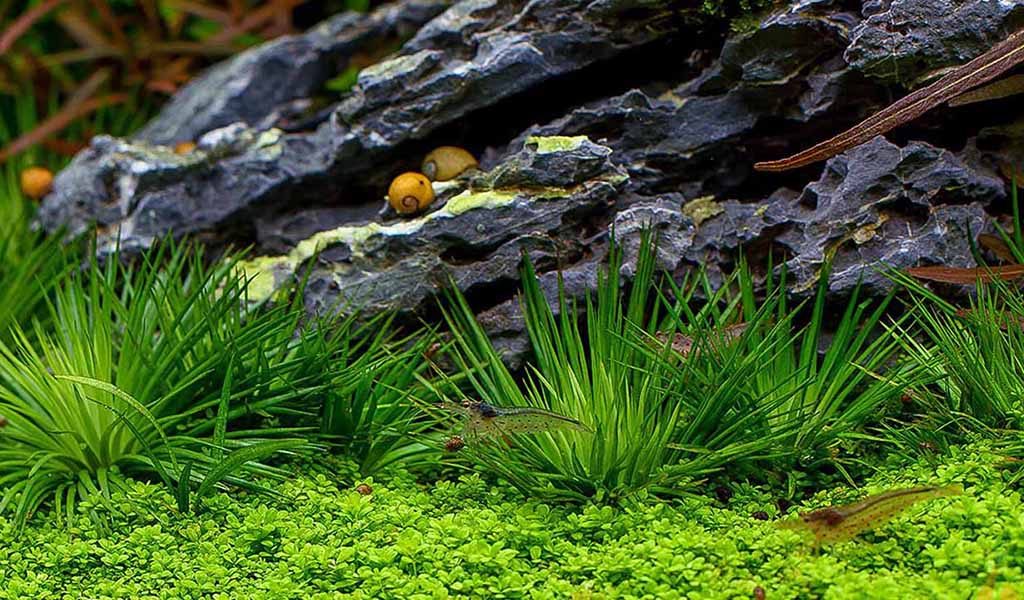
Eriocaulaceae family
Eriocaulaceae Family
Eriocaulaceae, or pipewort, is a group of monocotyledons. About 1200 pipewort species are discovered, which are divided into 7 genera. Pantropical regions, especially Brazil, are the house of their species. It also has 10 genera of grass-like leaves with tufte herbs. These genera grow in tropical regions. In the following, we’ll divide it into two categories, i.e., common Eriocaulon and rare Eriocaulon.
Common Eriocaulon
Tonina
| River Tonina is the common name of Tonina fluviatilis. It grows in the slow-moving rivers of Mexico, Central America, and northern South America. They form dense foliage mates in shallow waters. Firstly, the Japanese aquarists were impressed with their beauty and suitability for tank layouts. They require higher carbon dioxide supplementation and a regular dose of macro and micronutrients for proper growth in the tank. Use their 5-cm shoot cutting for optimal growth. A side shoot performs suitable growth. |
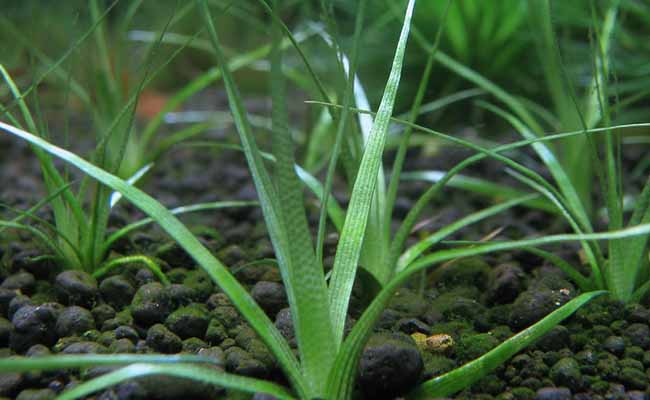 |
Syngonanthus
| Its common name is yellow hatpins. This flowering plant has glandular hairs on the stalk. They grow in the Southern United States, i.e., Florida, Alabama, Georgia, North Carolina, and South Carolina. It has 195 species. They are divided into male and female plants. Balanced nutrient supply, acidic water with higher CO2 concentration, i.e., 30 mg/l, and strong lighting optimize their growth. Without proper water parameters, they show stunted growth from the crown. |
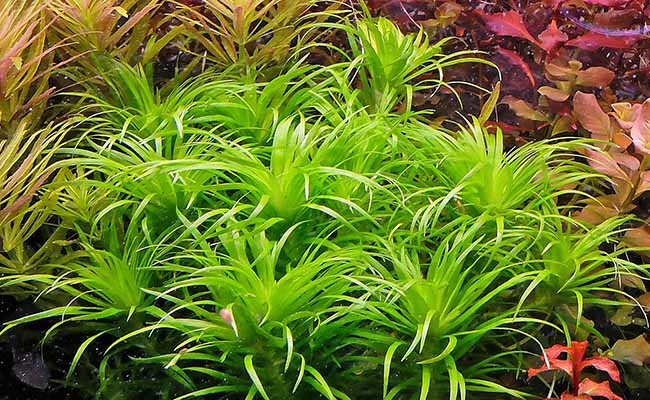 |
Mesanthemum
| Small flowers at the head and a basal tuft of narrow leaves are characteristics of this common Eriocaulaceae. It’s a tropical African native plant that mainly grows in Madagascar and ranges from South Zaire to North Zambia. This perennial plant has 16 different accepted species. | 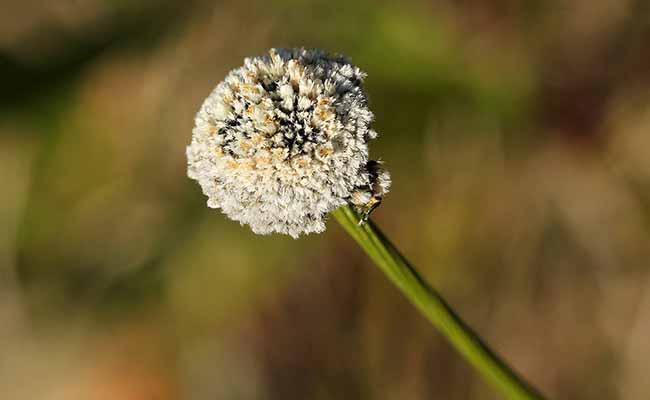 |
Paepalanthus
| It’s another common diverse genus of monocots Eriocaulaceae plant. It has around about 400 species. Free petals on pistillate flowers, hairy capitulum, and stigmatic branches are some unique features of Paepalanthus. They usually grow in the Neotropical highlands of South America, i.e., Texas and Cuba’s Isla de la Juventud. However, their presence is also observed around restingas of the Brazilian coast and Andean paramo. |
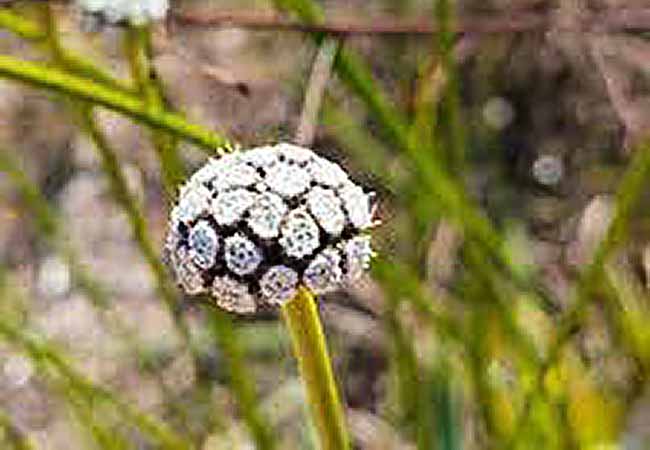 |
The Rarely Eriocaulon
Blastocaulon
| Its scientific name is Blastocaulon albidum, a synonym for Paepalanthus albidus. Small perennial herbs or plants grow in wetlands of North, South, and Central America. They have linear, narrow, and heavily dense leaves that start growing from near the plant base. The densely packed multi-color tiny flower, i.e., cream, white, or pale green, at the capitula gives them a unique shape. |
 |
Lachnocaulon
| Lachnocaulon anceps is the scientific name of the Woollyhead chaffhead plant. Lachnocaulon is native to the Southeastern United States, i.e., Georgia, Alabama, Louisiana, Florida, Texas, and South Carolina. It grows in marshes, bogs, and edges of lakes, ponds, and streams. They have upright, slender, and smooth or hairy stems that can grow up to 16 inches high. Their grass-like leaves form dense tufts along the stem. The most fascinating thing about this plant is its inflorescence. These flowers are small and inconspicuous and form compact capitula. |
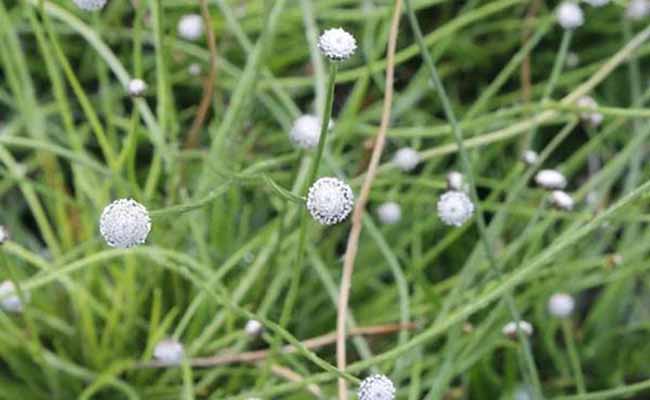 |
Louisiana
| It’s another rare Eriocaulaceae plant with Philodice ludoviciensis scientific name. They are native to South America, i.e., Mississippi, Louisiana, and Alabama, and grow in wetlands. Louisiana has erected slender that can grow up to several feet high. Like other rare Eriocaulaceae species, they also have narrow grass-like leaves. They produce a small flower bunch, i.e., capitula, at the end of the stem. |
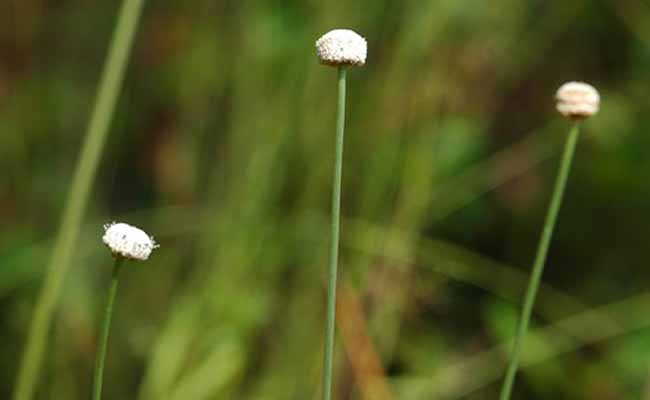 |
Rhodonanthus
| This commonly known rose rush has a scientific name as Rhodonanthus grandiflorus. They are native to South Brazil’s humid and subtropical regions, especially the Atlantic Forest Biome regions. They have upright stems that can grow between 1 or 3 feet high and 0.5 to 0.75 feet wide. Their leaves densely grow along the steam. It bears sparkling pink to purple color flowers. Like other wetland plants, they also have fibrous roots that help them to intake nutrients. |
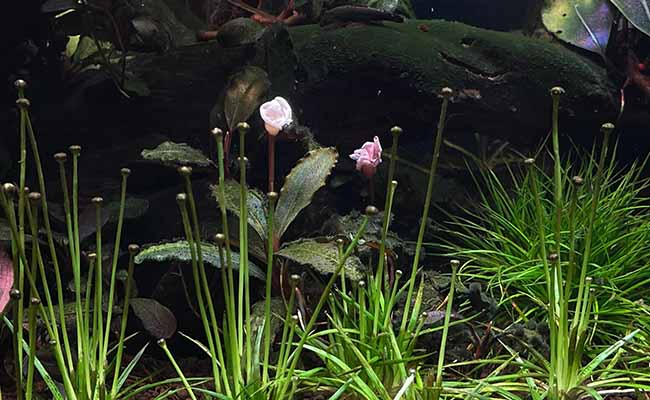 |
How to Grow Eriocaulon in Aquariums
Remember numerous aspects while growing eriocaulon in aquariums. These are in the following.
Light
These plants require inundated light and a proper supply of CO2 for optimal growth. Therefore, make sure that they reside beside the shaded plants. Strong light gives a red shade to your plants.
Water Parameters
Each Eriocaulaceae species requires specific water parameters. However, several things are shared among all species.
| Soft water | Acidic to slightly alkaline water | Water temperature between 22°C to 28°C |
Regarding alkalinity, remember that these plants preferred low alkalinity, i.e., less than 3 dKH.
Flow Rate
They need a lot of flow around them while growing in the tank. You can install a wave pump to solve the flow required.
Soil Parameters
Eriocaulon shows optimal growth in the nutrient-rich and acidic substrate. Aquasoils that are rich in ammonia are a growth booster for these plants.
Why the Eriocaulon Producing So Many Flowers?
They produce a high floral count due to environmental, biological, and reproductive strategies. Some of the reasons are in the following.
Enhance Reproductive Output
They usually grow in wetlands and have evolved reproduction strategies that keep them alive in these highly varying conditions. Producing huge flowers increases the chance of successful pollination and seed production.
Successful Pollination
These plants depend on bees and small insects for pollination. Therefore, they produce a large floral count to attract more bees and other small insects for enhanced pollination.
Avoiding Florivory
Some floral plants face the threat of folivores, i.e., flower-consuming organisms. These plants produce more flowers to reduce the chance of damage and maintain their progeny rate.
Plant density
These plants grow densely, which leads to enhanced and successful pollination. It’s another reason for high density.
Resource Consumption Efficiency
Eriocaulaceae grow in a nutrient-rich environment. They make an extraordinary balance of resource consumption. They efficiently use the nutrients for plant growth and flower production.
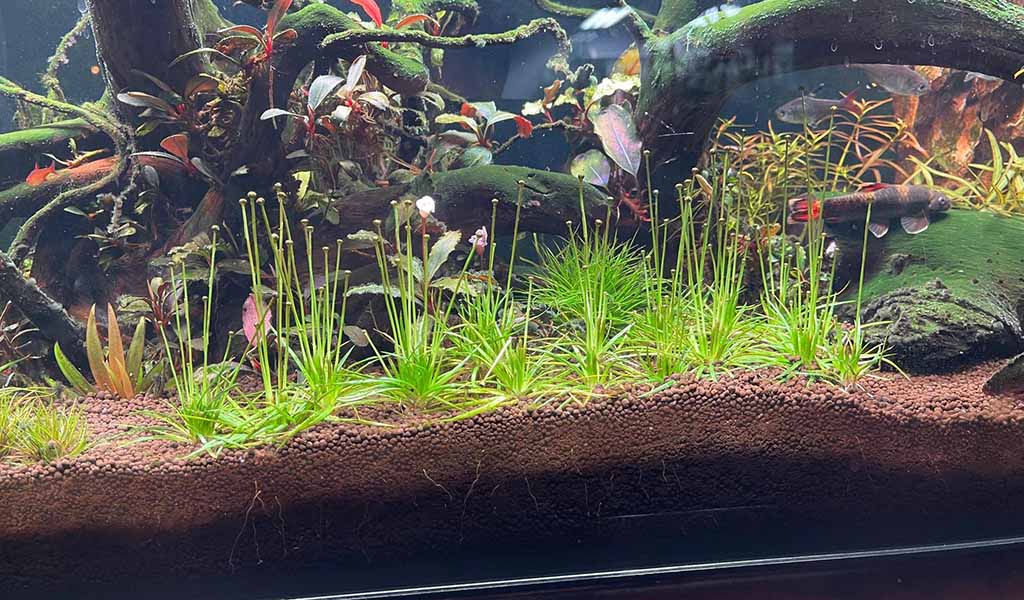
Eriocaulon cinereum
Eriocaulon Cinereum Care
There are several care parameters to keep your Eriocaulon Cinereum healthy and thriving in your tank. Some vital parameters are in the following.
Water Parameters
| Maintain the water hardness between 1 to 4 dKH | Control pH between 5.5 to 7.0 | Keep the water temperature between 20 to 28°C |
Substrate
- The substrate should be well-aerated as it promotes healthy root propagation. Moreover, it’ll also give vigor to the plant
- The substrate should be nutrient-rich as it promotes robust plant growth. You can use root tabs and root fertilizer to keep it nutrient-rich.
- The substrate depth should be at least 2 inches.
Lighting and CO2 Supply
- Supply CO2 to observe optimal plant growth. It helps in photosynthesis and overall plant growth. It should be between 20-30 mg/L.
- Provide intense light as they respond well at high intensity.
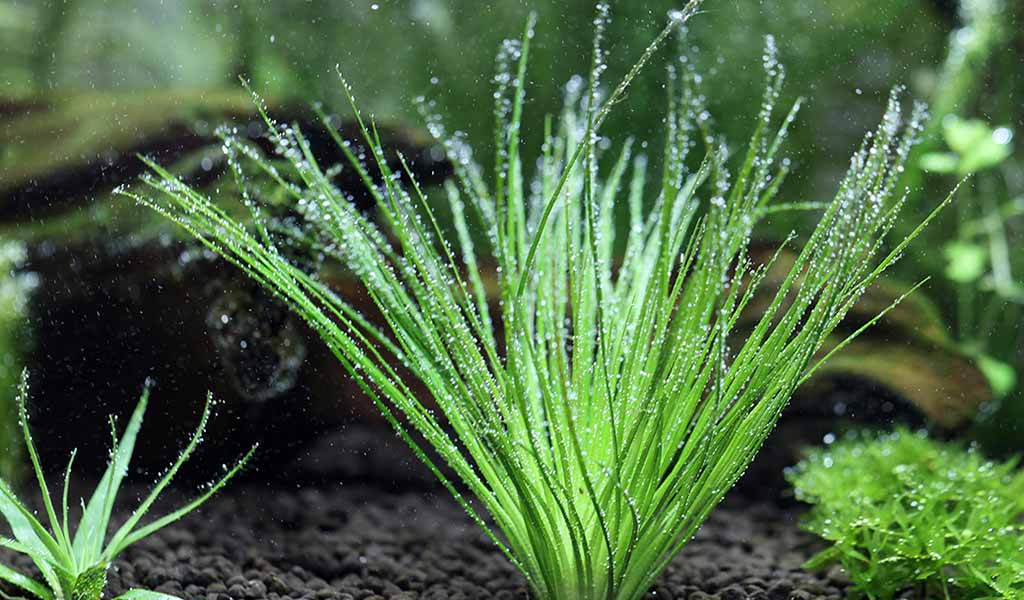
Eriocaulon cinereum care
Eriocaulon Cinereum Aquascape
Eriocaulon cinereum is a small wetland and aquarium plant. It produces a dense structure with a hedgehog-like rosette with rigid and narrow leaves and gives a silvery green look underwater. It’s a habitat of warm regions of Africa, Asia, and Australia. They usually grow in wet and flooded areas.
In aquascapes, they act as an accent plant. They are placed in the midground to foreground of the open area. Here is the proper way to produce an Eriocaulon cinereum aquascape in your tank.
Propagation
There are two ways to grow an Eriocaulon cinereum plant: cutting and seed
Cutting
Cutting is the most famous and widely adapted method to grow them.
- Remove the desired plant from the substrate.
- Divide it into 2 or 3 pieces with a knife from the rosette.
- Remove the leaves.
- Cut the long root by ½ to ⅓ of length.
- Plant it in the substrate.
You can also grow it from the daughter plant.
Seed
It’s a complex method and needs extra attention. Top of all, you’ll not be sure about the growth.
- Take the seed from the plant that rises over the water surface.
- Make a plastic container.
- Introduce a 1-inch substrate layer.
- Water the edges.
- Scatter the seed.
- It’ll take 2 to 3 weeks for growth.
- When it reaches 5 to 6 leaves, it’s ready to transplant.
Aquascaping
- Lay a 2-inch deep substrate layer in the tank.
- Burry the plant roots in nutrient-rich substrate. It’ll provide the plant stability and proper nutrient nutrient uptake.
- Keep 3 to 4 inches of space between two plants. It’ll produce a beautiful aquascape.
- On submerging, plants may melt away. Decayed leaves resist the new growth. Place the plant sideways on the substrate and secure them with a staple. In this way, old stems won’t cause any issues.
Aquascaping Care
It is a short-life plant. You won’t be able to see it for long. Regrow new plant with shoots. You can control the algae growth, with light adjustment, algae eater, and regular water change.
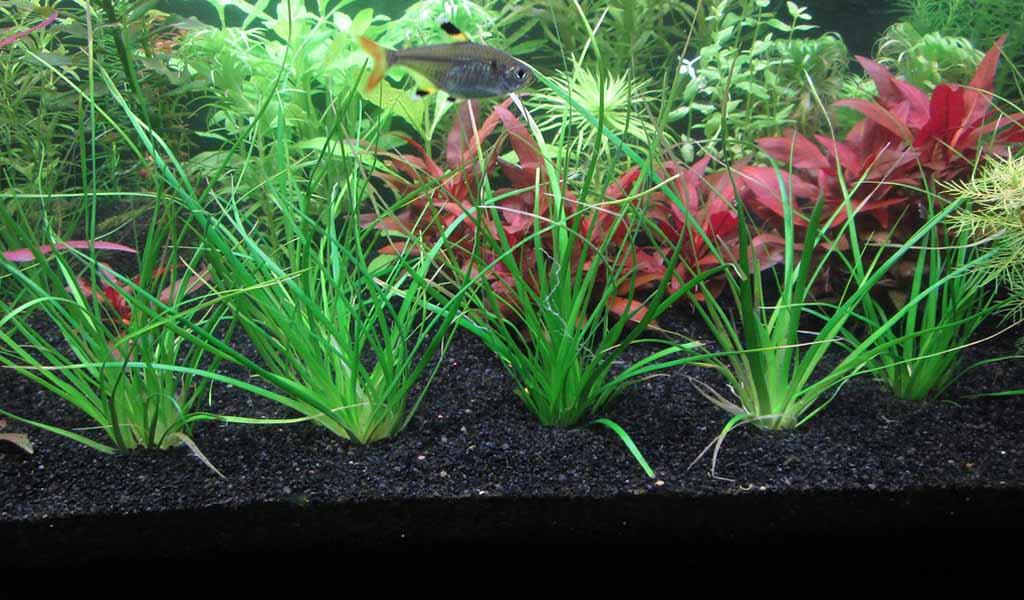
Eriocaulon aquarium
The Bottom Line
Eriocaulaceae are sub-tropical monocotyledon plants that mainly house in Brazil. However, some species also grow in tropical regions. Some common and rarely grown varieties of Eriocaulaceae were briefly discussed. You can grow them in planted tanks by maintaining proper lighting, water parameters, flow rate, and soil parameters. You can use Eriocaulon cinereum for the aquascape tank with proper care and following optimal growth tips.
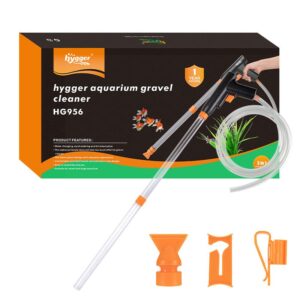

Leave a comment